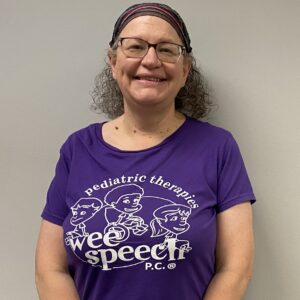Here are 5 common techniques used by speech-language pathologists everywhere, that
parents and caregivers can use when practicing with your little ones at home:
1. Give Choices: Instead of asking your child a yes/no question (“Do you want juice?”), ask
an either/or question (“Do you want juice or milk?”). This will encourage their use of
more vocabulary.
2. Simplify Language: Keep it short, clear and concise. If your child has difficulty
comprehending language, this can help with understanding. You can still expand your
child’s sentence structure without being too wordy. Instead of, “Do you want to go in the
kitchen with me to bake some chocolate chip cookies?” try, “Let’s go bake some
cookies!”
3. Wait Time: If you ask your child a question or ask them to repeat a word, give them
several seconds to respond.
4. Follow a Child’s Lead: This refers to watching your child and noticing what they like to
play with, then using their interests to engage them and get them to communicate.
5. Modeling: If your child is working on a specific sound or word, model the word/phrase
you want them to practice. Find as many opportunities as you can to repeat the model,
to give them a lot of chances to hear the target. You can also model language by talking
about what you or your child are doing, seeing, hearing or feeling. (Remember, keep it
short and simple!)
Get a Free Online Assessment
Looking for an expert opinion on your child's needs? Fill out a 3 minute questionnaire and receive a personal evaluation from our staff




